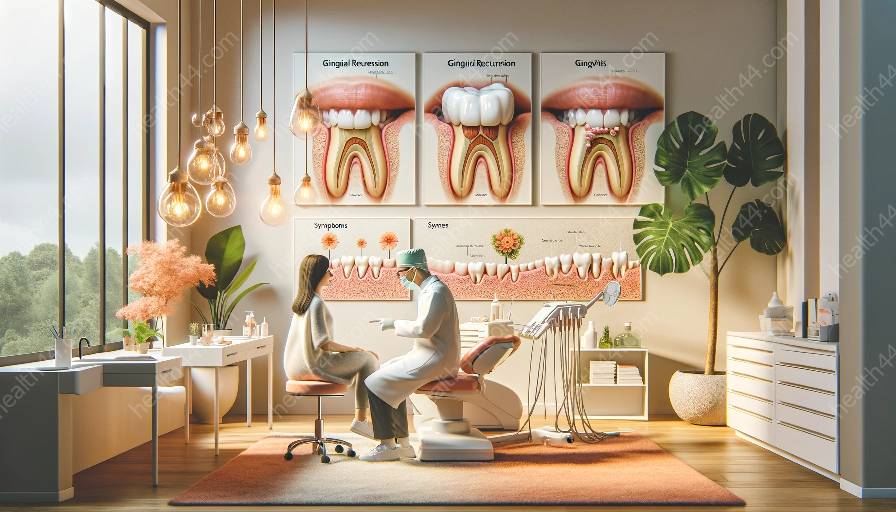Orthodontics is a specialized field of dentistry that focuses on correcting the alignment and positioning of teeth and jaws. While orthodontic treatment is primarily aimed at improving the aesthetics and functionality of the smile, it also has a significant impact on the health of the surrounding gingival tissues.
The Relationship Between Orthodontics and Gingival Health
When discussing the impact of orthodontic treatment on gingival health, it is essential to consider the potential connections to gingival recession and gingivitis.
Gingival Recession and Orthodontics
Gingival recession is the process in which the margin of the gingiva (gums) pulls away from the tooth, exposing more of the tooth's root. This can lead to heightened sensitivity, aesthetic concerns, and an increased risk of root caries.
Orthodontic treatment, particularly traditional braces, can sometimes contribute to gingival recession. The application of force to move teeth into proper alignment may put pressure on the surrounding gingival tissues, potentially leading to recession in some cases.
Modern orthodontic techniques and materials, such as low-friction brackets and customized treatment plans, aim to minimize the risk of gingival recession and prioritize the overall health of the gingival tissues throughout the treatment process.
Gingivitis and Orthodontics
Gingivitis is a common condition characterized by inflammation of the gums, often caused by the presence of plaque and bacteria. Orthodontic appliances, such as braces and aligners, can create additional challenges in maintaining proper oral hygiene, potentially increasing the risk of gingivitis.
However, patients undergoing orthodontic treatment can proactively address this concern by adopting meticulous oral hygiene practices, including thorough brushing and flossing, as well as regular dental check-ups and cleanings.
Promoting Gingival Health During Orthodontic Treatment
Orthodontists and other dental professionals play a crucial role in educating patients about the importance of maintaining optimal gingival health during orthodontic treatment. By providing tailored guidance and support, they can help patients minimize the risk of gingival recession and gingivitis while undergoing orthodontic care.
Preventive Measures
Implementing preventive measures, such as the use of specialized oral hygiene tools and techniques, can significantly contribute to preserving gingival health during orthodontic treatment. Patients are often advised to use interdental brushes, floss threaders, and antimicrobial mouth rinses to effectively clean around braces and other orthodontic appliances.
Regular Monitoring and Maintenance
Frequent monitoring of the gingival status is essential throughout orthodontic treatment. Orthodontists and hygienists can closely assess the condition of the gingiva and provide personalized recommendations to address any emerging issues promptly.
Collaborative Approach
Teamwork between orthodontists and general dentists is instrumental in ensuring comprehensive care for patients undergoing orthodontic treatment. By aligning on treatment goals and collaborating on gingival health management, these professionals can optimize the overall health of the oral cavity.
Conclusion
Orthodontics and its impact on gingival health encompass a complex interplay between treatment modalities, patient compliance, and professional guidance. By recognizing the potential connections to gingival recession and gingivitis, both dental practitioners and patients can work together to prioritize the preservation of gingival health throughout the orthodontic journey.













